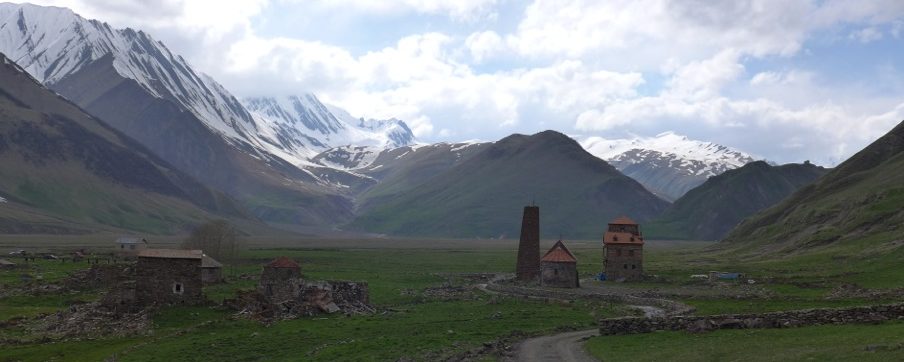Georgian history is like an onion. Just when you think you have a good grasp of its shape and content, you suddenly find yourself pulling off another layer.
While Georgia’s Christian history is incredibly complex (dating back to the 4th century AD), many travelers will be stunned to learn about the depth and importance of its pre-Christian history.
Uplistsikhe (try saying it three time fast!) is a great place to start, especially since it is so close and convenient as a day-trip from Tbilisi. An active cave city from the 6th century BC until the 1st century AD, it soon became a regional powerhouse and trade center thanks to its strategic location along a caravan route running from Europe to Asia.
Although Uplistsikhe housed 20,000 people at its peak, its importance declined when King David the Builder retook Tbilisi in 1122. What you can see now was uncovered by archeologists beginning in 1957 and encompasses only the “Inner City” of the once sprawling site – less than half overall. As with many sites in Georgia, Uplistsikhe was devastated by the Mongols in 1240 and never fully recovered.
Time Needed
2-3 hours, more if this type of history and archaeology interests you.
Distance from Tbilisi and Gori
1.5 hours from Tbilisi, 25 min from Gori.
Transportation
Driving and/or hiring a car is best, as the location is a bit “out there”. Otherwise, a round-trip taxi from Gori (with wait time) should cost 40-50 lari. Marshrutky also leave from Gori but will drop you off across the river from Uplistsikhe in the village of Kvakhvreli (2-3 lari at most). It is then about 2-2.5km to the site on foot (or taxi).
Reason to Go
This is the best example of a pre-Christian cave city near Tbilisi. Vardzia is more elaborate, but much farther away.
Regional Combinations
As mentioned in other posts, Mtskheta, Gori, and Uplistsikhe make a wonderful, full-day trip from Tbilisi. If you depart early enough, you can have Mtskheta (and it’s cathedral) all to yourself before enjoying some Mtskheta beans and stopping in Gori for the Stalin Museum and lunch. Then, backtrack to Uplistsikhe before heading back to Tbilisi for dinner (and even a show, as we did.)

Stop by the Uplistsikhe visitor’s center before entering the site to get a detailed guide on which buildings/structures served what purposes. Every year these types of facilities are improved.

Much of what you see at Uplistsikhe was literally buried until the 1950’s – only the tops of these cave structures were visible.

One Uplistsikhe cave, known as the Theatre, dates from the 1st or 2nd century AD and is presumed to have served as a forum for religious plays. It has an extremely unique ceiling carved with octagonal designs.

And as simple as they are, some of the most impressive carvings at Uplistsikhe are the steps – extremely practical for the slippery stone on which the city was built.
